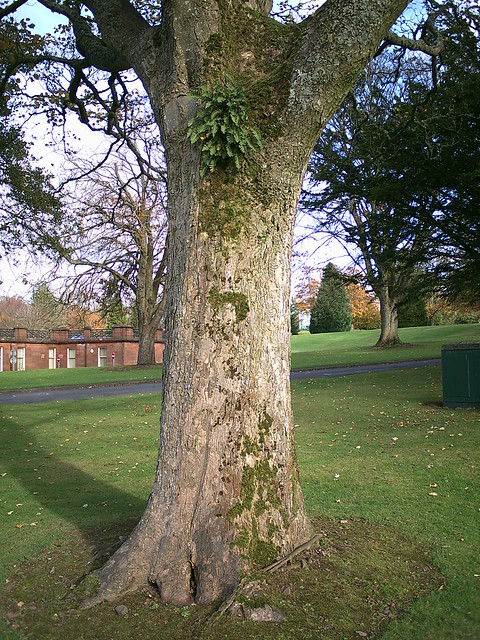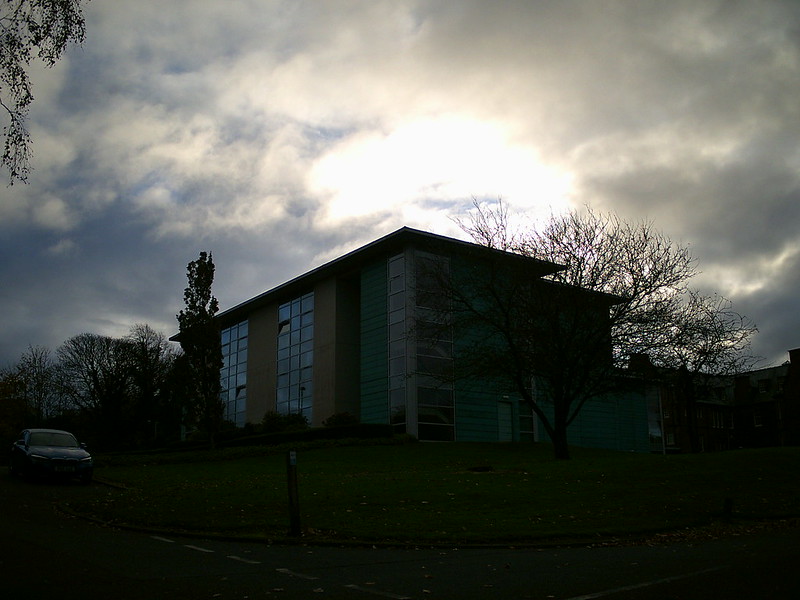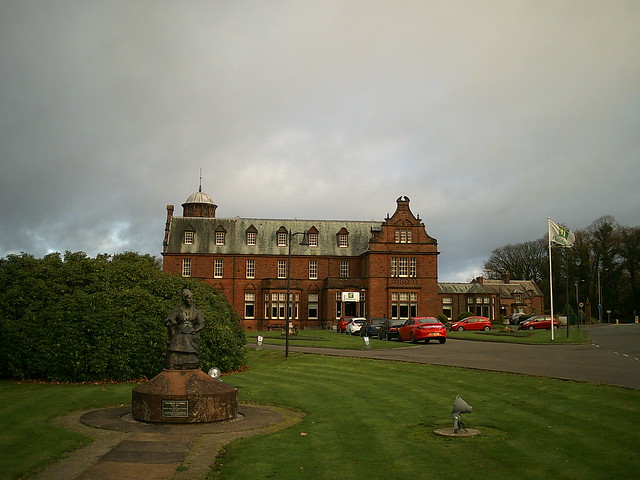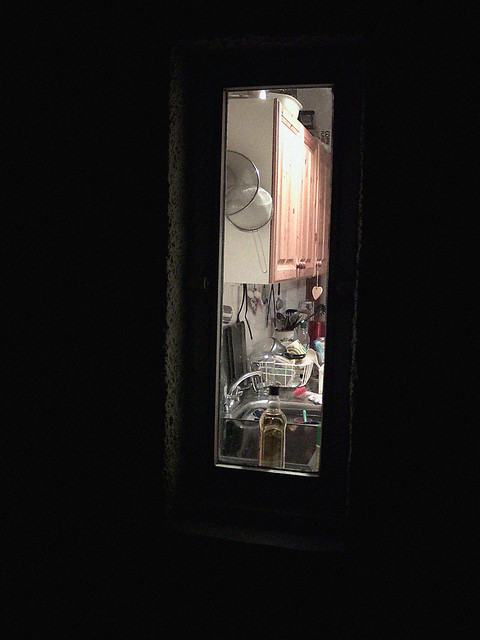Before the Kickstarter Yashica Y35 project even closed there were negative rumblings and those have intensified over this year reaching fever pitch when the camera shipped. But what did folk really expect for ~$120USD ? Are we making realistic appraisals of this camera with too high expections
Background
If you thought Yashica was long since toast and have never heard of the Y35, what have you been doing for the last 12 months ? Kyocera who took over the Yashica brand in 1983 ceased camera production in 2005 and for many that’s when the brand died (some argue that happened in 1983. Granted Kyocera sold the brand name on in 2008 and we had a run of cheap HK made digital under the Yashica brand (including this one by Haking and this nearly digital Holga reviewed by CNET).
But last July a more stylish Yashica website popped up. A smartphone add on lens appeared shortly afterward with a nod in it’s packaging to the company lineage. And then a camera resembling the legendary Electro 35 started to be teased….
That was what we know call the Y35 in prototype form. Stylish advertised with a strong hint of retro glamour and the hint of bring back the classic name with an all new digital system that linked to the company’s film roots.
It was a successful pitch and over 6000 folk backed it on Kickstarter and more on . The project reached it target within 4 hours of launch. But almost as soon as it was launched a host of negative discussion and posts began.
Bad Press
That’s intensified over the last 12 months with many backers wondering what they’d signed up for. And it’s reached fever pitch in the last few weeks as the camera arrived. By and large the Y35 been torn apart in the the online camera sites. Much of this has focused on a series of YouTube reviews by Point&ShootClub
There has also been a lot of focus on the 4000 comments left on the kickstarter site. Sites like photoblographer have picked this up suggesting the bulk are to do with issues and granted there are a lot of unhappy folk. But the bulk of the posts have been of the “dude where’s my camera ?” ilk.
However there does seem to be a fair number of issues out there of either dead or easily broken cameras. Yashica seem to be incredibly unresponsive to this and have since launch not been great at responding. I’m even a case in point – never got my shipment notification, the camera just turned up !
Luckily mines worked so lets have a look

Expectations Managed
So why did I get one ? Was it lure of resurrecting a legendary Marque ? The possibility of an innovative approach to photgraphy marrying film aesthetics and digital. ? Was it the slick advertising with an attractive young lady waving the prototype around ? (never a middle aged bloke I note). Or could it have been the couple of glasses of a reasonable priced Malbec that night ?
I can’t recall but it certainly wasn’t with expectations of a phenomenal bargain. At a cost about $120USD, I got the standard early bird package which came with 4 DigiFilm modules. What I expected was a working digital camera and I got that. But how much more should I & others have expected ?

Unlike some I never realistically expected a state of the art metal bodied compact. I was assuming a more toy effect camera would be in order but with some retro charm but did I get that?

The Specs
Yashica shoot themselves in the foot big time here with the specs. They quote the equivalent focal length (35mm) for a full frame camera. What you actually get a 6mm lens matched to a 1/2.5″ CMOS sensor. Most compacts have bigger sensors now but you’ll still find cheap cameras and many a smartphone with that size of a sensor. the lens has allegedly 4 elements
Like a smartphone the aperture is fixed at f/2. It wasn’t clear early on that the Y35 would have fixed aperture and I was a tad disappointed but actually it makes sense on a cheap build (and heck your smartphone camera works on this principle. Yashica say shutter operates between 1/30-1/6000. I’m not convinced as thats 3 time s as fast as my iPhone can shoot and 50% faster than my Lumix G2. The EXIF data says every shot is 1sec regardless of conditions so I have no way of telling. You can compensate by 2 EV stops (+/-)

Focus is fixed. That’s a shame. i had wondered if we’d get a scale focus or zone focus. I had no exceptions of a rangefinder for the money. AF could have been possible. But whilst this moves the camera immediately to toy digital class. It isn’t the end of the world. The manual quotes a 1m to infinity focal range but as we’ll see that a bit hopeful.
There is no LCD panel that you’d find on most digital compacts. Part of the aesthetic or cost cutting – I’ll leave you to ponder but this means your control of the camera is limited to EV compensation and what DigiFilm you load.
The camera uses 2 ordinary AA batteries and accepts SD &SDHC cards for storage

Looks
Credit due. They’ve actually styled this quite nice. It does look like a 35mm camera at first glance styled in the 1970’s black and silver style. The only odd looking thing is the lens barrel which is too narrow and too long. You’ll notice that the hotshoe is actually just a fixture point for as yet not available clip on LED light. A flash doesn’t even fit on. Nor can you add a cable release despite it looking like you could
There’s a sham rewind knob on the the top plate as well as the EV compensation dial. The latter is located where the electro had the ISO dial but looks a tad cheaper. The shutter lock button turns camera on and off and there’s a proper winder which is a rare metal piece with a quite tasty action to it.

There’s a single LED on the back (more on that later) but no LCD panel that you’d find on most digitals. Part of the aesthetic or cost cutting – I’ll leave you to ponder but this means your control of the camera is limited to EV compensation and what DigiFilm you load.
Build quality
Hmmm…. mixed bag. As you’d expect this is plastic city. A simple fridge magnet test reveals little external metal beyond the cold shoe and the winder. Even the lugs are non magnetic. That said it looks the part and there’s some attention to detail on the silver parts. The camera is nicely engrave effected both on body and lens. The plastic doesn’t feel it would withstand much abuse but is no worse than many sub £100 compacts. The winder has a good feel but the on switch is flimsy.

The black plastic looks and feels cheap however and my film door doesn’t really open as you’d expect. Also the camera feels too light. i don’t own a electro 35 but my Chinon 35EE unloaded weighed almost 100gms heavier than a battery & DigiFilm loaded Y35. The Y35 has 2 metal weights in it to make it feel more substantive but it still feels more like a lightweight compact from the 90’s than than a 70’s camera. The lens cap is too tight and it’s actually easier to unscrew the chrome lens mount with it than just remove it when new. It does loosen with use. There is a 37mm filter thread.
There’s a naff flat glass sheet in front of the lens. I’ve seen this before on some cameras at the cheaper end like the awful Halina Silhouette. It’s designed to protect the front element but is of little value.
The viewfinder is a basic Reverse Galilean type. It is a good size and reasonably central but only covers about 70% of the frame.

Use
You’ll need to bring your own AA batteries and memory card. Once you put the batteries in and before you put in the SD card, connect the camera to the computer. This is to set the camera’s clock. I found you’ll need to manually launch the app but I note there are versions for both windows and Macs.
Now pick your DigiFilm. Each of these bring a different film style filter. I’m gonna discuss these later but think of them as filter effects that you get with digital cameras. The obvious one is the B&W module.

To use the camera you turn on an wait for the rear LED to go from purple to red. You’ll need to wind the camera on and then depress the shutter. The shutter seems to depress in 2 stages. i dunno if this a hommage to the old half depress to AE lock technique but it is really weird feeling. When fully depressed there’s about a second delay before a click sound occurs and the LED light changes colour. Oh yes it’s like using a Konica C35AF again but there’s worse to come…..
That the click actually doesn’t mean the shot is taken. You need to keep the camera steady until the LED turns back Red. In low light you could end up with a blurred shot if you don’t . In good light you’ll end up taking a shot off target.

There is no feedback for too low light or over exposure risk. If the latter occurs severely you just get a black frame. You’ll also need to wait until you put the SD card in or hook the camera up to your PC to see the photos.
EXIF data is frankly weird. Using the 200, B&W and 1600 The 200 operated at 100 ISO according to the EXIF and the 1600 as 300 ISO. Every shot taken was exactly 1 second shutter whether it be on a nightime street or a well light room. At least it has the date and DigiFilm used.
The film advance was actually quite satisfying. Again the absence of a LCD review screen probably helped regards that.
Performance.

I’ll discuss the various DigiFilms in a mo but lest focus on the results in General. So lets begoin by talking about daylight shots using the 200 module.
The good news is the camera is capable of producing useable images as you can see for web use and a dare say you could get useable 7×5 prints. But…
At this level you’ll notice the barrel distortion. This is much more noticeable in the 1-3m zone. The focus is what I’d expect from the average fixed focus film compact. A wee bit soft but reasonably consistent across the frame with only marginal worsening at the edges. Although the packaging suggest a 1m to infinity focal range the camera noticeably softens from 2m and under. It’s a gripe I have with the Point&Shoot Club review – the shots they use are are from ~1m. If you run a 6mm 1:2 with a1/2.5″ sensor through a DoF calculator, with an optimal hyperfocal distance the close range is nearer to 2m.
Exposure was quite good provided you kept the light source behind you. The camera tends to blow highlights awfully both in natural and artificial light.

Weirdly the camera did actually alright in very low light static shots using the high speed 1600 DigiFilm.

This is no killer night shootah but… it actually did okay given it’s limitations.
Not so good – realistic comparisons
I say web use or small prints. On paper the 14MP sensor should be capable of producing 14×11″ prints at 300 dpi. But trust me you’d wanna think twice, if you zoom in a tad you’ll see why.

The pattern on the white of the sign is the reflective coating. But look at the edges quite marked fringes. This is pretty constant across all shots. It and the frequent artifacts suggests over-processing. The files aren’t that compressed in size so we must put it down to the digital processor.
I’ve seen worse but those have been cheap older camera phone, webcams and those £20-40 cheap digicams. For a real comparison take this 13 year old 6MP dSLR shot cropped to the same size

Okay this benefits from better AF focused optics and a bigger APS-C sensor. But that sensor over a decade old !
So how about this 2002 fixed focus 2MP C120 Olympus digital camera.

Although less evident here it can fringe as badly as the Y35 at times but that’s usually when you have back lighting (something the Y35 really can’t do)

Oh and it could shoot video too !
DigiFilm
The USP/Gimmick is DigiFilm. These essentially apply preset ISO speeds, grain and colour balance to your shots. My iPhone does this too except its called a filter.
Each DigiFilm cartridge is about the same size as a APS cartridge. They contain a small chip on a board to relay settings. 6 DigiFilm cartridges were available at launch with folk receiving between 1 and 6 depending on their levels of backing.
So lets take a look
200
ISO200 Ultrafine is the long title. This is meant to imitate a 200 ISO film with fine grain and is the standard film of the Y35. it broadly does what it says on the tin. It is finer grain than the 1600 or B&W modules. EXIF data indicates a 100 ISO speed but EXIF data is broadly crap here.
B&W
Duh ! for B&W. Purportedly 400 ISO (EXIF says 200 ISO). Actually quite pleasing in good light with a grain effect. Does sky nicely but shots do suffer from limited dynamic range

1600
1600ISO high Speed supposedly (EXIF says 300 ISO). More grainy and a bit flatter re colours as you’d expect. Night shooting worked oddly quite well.
6×6
Meant to replicate 120 film frames and aimed squarely at the instagram Kids. Meant to be 200 ISO (EXIF says 100 ISO). I get a weird green cast with this (easily corrected) using this as do many others. and frankly it really is otherwise pointless.
I got the standard pack with the above 4 DigiFilm. the other 2 are a Yashica Blue (blue tones!) and “Unexpected 2017 (In My Fancy)” which gives kinda retro tones.
If the camera had a LCD I’d hate this but it kinda works here.
Conclusions
What I need to say upfront this is not a great camera and no one should kid themselves that it is. If you want a dependable digital that will give good clinical images take your $120 and buy named brand compact that has good reviews.
Nor is it great value. It’s sensor ain’t great. It is fixed focus and the EXIF is just weird. You’ll also get a cheap plastic lightweight when you’ll get metal bodied compacts for the same money. Build quality is questionable.
However if you get a working one, it isn’t sh*t as some suggest.This isn’t the worst camera in the world both digital and film wise. There are loads of very cheap digital compacts that are loads worse (I’m thinking of those cameras aimed for kids). It can take workable images but you need to understand its eccentricities. the shutter delay is frankly awful and the biggest issue. This isn’t your next best camera. But weirdly it works at some level in terms of the film links -a winder driven digital with film packs
It is a lo-fi digital shooter but for $120 what did people expect ? I doubt many more will be sold over the ones given out to backers unless it acquires a cult status. I’m guessing that’s what the makers were aiming for – the LC-A of digitals but the intense hostility makes this unlikely. But did people really expect the unexpected here ? If you wanna cheap reliable camera you don’t get it off kickstarter. Kickstarter is as much about the development of ideas.
Were we gonna get a digital equivalent of a razor sharp rangefinder lovingly modernised for $120 ? To buy a digital Leica M-10-D will cost you just under $8,000 for the body alone. If you don’t think that’s a fair comparison – what about the Ricoh GR-II ? This 11 year old still in camera is still in production. It remains the benchmark for other elite fixed focal length digitals. You’ll get a dollar back from $500 buying one on Amazon in the US.
Suddenly your expectations drop

Notes
- I backed this on kickstarter myself and I’m not being sponsored or preferentially treated for this review. I’ve no pecuniary or other interests in Yashica. this reviews are my own views based on actual use.
- I shot this with Fresh Duracell batteries and a SanDisk Class 10 SDHC card.
- All crop shots were based on JPEG files as transfered. No post editing was done.




I never liked this concept in the first place and now I hear that the quality is junk I feel sorry for people who were taken in.
If people wanted the film experience, why didn’t they just get a used film camera and shoot a few rolls???
It’s a valid point David. I suppose at the end of the day this has got people talking and the “might as well by a good film camera” line pops up a lot which might encourage people over. The concept is weirdly not that bad in use but the camera is I admit not great and flawed. I seem to be lucky as I’ve shot over 100 frames and it is still working fine bar the film compartment door issue and the green cast on the 6×6. The company’s build quality and QC is the biggest issue and isn’t helped by one of the worst shutter mechanism I’ve ever used. However for $120USD what were people really expecting for a small production run. Granted they should have got a better build quality and better shutter and sensor but what much more really should we have expected ? There seems to have been an assumption it was gonna be a some near elite retro camera but give the likes of the aging GR II which cost 4 times as much ain’t that cheap was that realistic
Best place for digital cameras with a proper viewfinder are boot fairs and charity shops. My Canon A430 however was a Morgan offer a few years back, snapped up quickly. At the time I bought an SD card that can also be used on a USB port, really useful.
Lomo tend to get my kickstarter money. Instant Square is great, awaiting Diana instant. Expecting soon daylight loading tank.
Seems to me best feature for this Yashica is the proper viewfinder. Circa £100 seems a bit OTT though for the rest.
Lomography do Kickstarter pretty well IMHO. However they’re a big company and pretty much use it as a way of drumming up interest and pre-orders and gauge the demand. That said they deliver what they promise and usually on time. What’s worth noting is that although they also offer a whopping discount you and I and the other backers are getting a camera that will eventually retail at ~$100 USD and will have (and I’m talking from a Devil’s advocate POV) a deeply flawed lens with a plastic body that may not be that durable. Difference is that’s what we’re expecting
Its really like a 10 USD Asian NoName Webcam, into a plastic housing, looking like a Rangefinder – and they do charge now 385 USD for that on indiegogo – not 120 $ anymore.
I do like my Yashica 35 Electro, as and for <400 USD, one can get a Fujifilm X100 into decent condition. It's really a shame, that Yashica doesn't have nothing in common with the real YASHICA, i do like my Yashica Gear & C/Y lenses way much.
A 5 MP Canon PowerShot S50/S60 is being that much better into Image Quality, with a bigger 1/1.8" sensor, real RAW capability, and full-metal body – and this brick cam goes used nowadays for as little as 10-20 USD, if you're lucky. Bought these into their heyday.
This "Yashica" is really a well over-priced plastic camera toy, with cheapskate webcam-like picture quality.
Nothing bad meant, but that must being said.
As a Holga Digital fan I backed it with the idea that it would be an updated more flexible version of the Holga. Like you, I’m blessed with a working camera and in just over a week of shooting ~500 shots I haven’t been disappointed. It would be nice if their claims that it wasn’t going to be a toy were true, but I expected it to be more or less what was received. It can be challenging, but seems more predictable and if you can believe, faster than the Holga. The exposure compansation is a great addition to this toy and came in handy in a recent museum visit. I splurged on the additional digifilm “In My Fancy” but skipped the Yashica blue. Reds really pop using it, however they went a little too heavy with the grain. Looking forward to see what others post to Instagram.
Why do some viewfinders show less than the area recieved by film: surely it is better to be slightly bigger?
I have a old canon digital zoom compact which shows only 80%, which is a bit annoying as I dislike using the back lcd:
that is awkward, it gives more shake, I can’t focus on the lcd without removing/peering round my glasses, and anyway surely using the viewfinder is ‘proper’ :).
Thus an 80% viewfinder is still infinitely better than no viewfinder but I don’t understand why a 100+a_littlebit% one isn’t used?